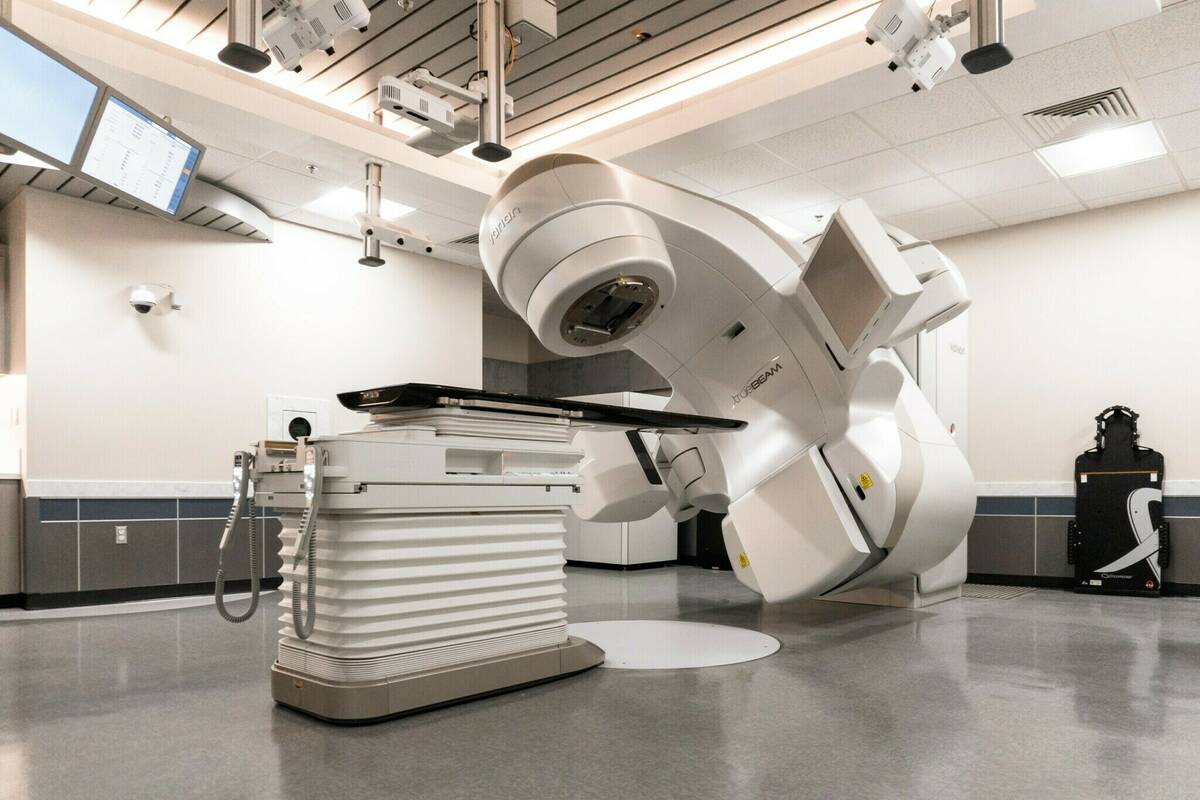← Cancer Center
Radiation Oncology

other services
The Meredith and Jeannie Ray Cancer Center is excited to expand our world-class radiation oncology care with the implementation of the new Varian TrueBeam Linear Accelerator.
A Linear Accelerator, commonly referred to as LINAC, is a machine used to administer external radiation treatments to patients with certain cancer diagnoses. LINAC uses high beam x‑rays to target tumors requiring radiation. Average treatments are performed daily, over a six-week period. With the TrueBeam, patients can complete a radiation treatment in as little as 20 minutes.
A TrueBeam Linear Accelerator is the most up to date, accurate radiation machine built. Ivinson’s LINAC features the newest technology and treatment capabilities available in the region. For patients facing cancer treatments, the new LINAC machine is cutting down on travel time to large facilities and bringing their radiation treatment much closer to home. The new linear accelerator includes several features that result in improved accuracy, safety and comfort for the patients receiving radiation treatment.
what you can expect
fast, precise treatments
Faster treatment times are made possible by TrueBeam’s technology which allows cancer care providers to visualize tumors in real-time 3D and target them with pinpoint precision. A device called a “multileaf collimator” conforms the radiation beam to match the exact size, shape and position of a cancerous tumor. Not only are treatments now 60% faster but they are also done while delivering less x‑ray exposure than previous radiation treatment options.
your comfort is a top priority
Radiation is not surgery, there is no incision, no post-surgical recovery period and, in most cases, no hospitalization required.
used by top-rated hospitals
TrueBeam is used by 8 of the top 10 cancer hospitals in the United States (as rated in the US News and World Report’s 2016 – 17 “Best Hospitals for Cancer.”)
other services
intensity-modulated radiation therapy (IMRT)
IMRT is not recommended for all cancer patients, but for those with tumors located in close proximity to vital organs it may be their best option. IMRT enables clinicians to control the amount of radiation each 0.5 mm square section of the tumor receives. It also minimizes radiation exposure to surrounding tissue.
Better Tumor Coverage — IMRT divides each radiation beam into multiple rays called beamlets and assigns varying intensities to individual rays. The amount of radiation each beamlet delivers is adjusted in proportion to the tumor’s density.
Multiple Targets — IMRT can treat multiple tumors at the same time, eliminating the need for extra treatment sessions. We work with physicians to determine if IMRT is appropriate for their patients and continue to work with the referring physician throughout the duration of treatment. After treatment, the patient returns to the referring physician for continued oncology care.
prostate variseed brachytherapy
This cutting-edge program is designed to treat prostate cancer with permanent radioactive seeds implanted directly into the prostate. A customized three dimensional plan is created and completed in surgery as an outpatient procedure.
image-guided radiation therapy
IGRT is a process of utilizing frequent imaging throughout the course of radiation treatment to ensure the radiation is delivered in the exact dose and location called for in the radiation plan. This component applies imaging coordinates from the treatment plan to ensure the patient is properly aligned in the treatment room.
stereotactic radiosurgery (SRS)
SRS is a non-surgical radiation therapy that delivers precisely-targeted radiation beams to treat tumors in localized areas of the brain, neck, lungs, liver, spine and other parts of the body. SRS uses precisely focused radiation beams to target tumors in fewer high-dose treatments than traditional therapy, which can help preserve healthy tissue.
